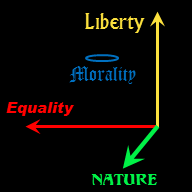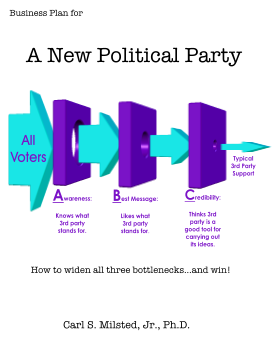Welfare Option 1: Target the “Truly Needy”
Let us start with a peek at a Republican favorite: targeting the “truly needy.” That is, instead of looking at how much people are currently making and giving them the difference between that amount and the poverty line, we look at each person's capability and give assistance accordingly.
On paper, it looks like we could approach the theoretical minimum payout and still relieve poverty. Since the payout is based on disability (or other unfortunate circumstance) instead of current behavior, we should in theory lose the perverse incentive of the simplistic approach.
Unfortunately, it is not all that easy to determine true need, to determine who is truly disabled and who is simply lazy or irresponsible. This results in several problems:
- People faking disability. (I have come across street beggars with better sales ability than many salespeople.)
- People who are subtly disabled who fail to qualify for help. (Think of many of the homeless.)
- People who are partially disabled who are scared to attempt rehabilitation since partial rehab may result in being able to make less money than they are currently getting in disability payments.
- People who are temporarily down on their luck. They can and should work but then need a momentary leg up.
- Government agents being given godlike powers to judge who is in need of benefits.
Some of these problems can be fixed by having multiple private agencies giving out the largesse. The multiple approaches allowed by private charities helps produce better judgment calls and reduces the power of the caseworkers. On the other hand, charities have more difficulty raising funds. A possible compromise would be government funds for the obvious and expensive cases with private charities taking care of the more borderline cases.
While there is much to be said for this approach, it cannot be used as a complete solution. People will fall through the cracks. There does need to be some type of generic welfare/charity that does not require proof of disability/need to handle those cracks.
More importantly, this approach is a questionable one for handling the huge amount of artificial poverty generated by the older welfare programs that used the simplistic approach. The current welfare reform is an attempt to make this transition. I leave it as an exercise for the reader to determine how well this is working.
Homework Assignment
- Check out the conservative literature/web sites and look for success stories of people getting their life in gear becaue they were forced to because of welfare reform. How do these stories relate to the gray areas on the graphs on the previous page?
- Check out the liberal literature/web sites and look for horror stories of people in dire need who lost their benefits due to welfare reform. [I assume such exist; I haven't actually checked.] How do these stories relate to the limitations of the "target the truly needy" option on this page?


